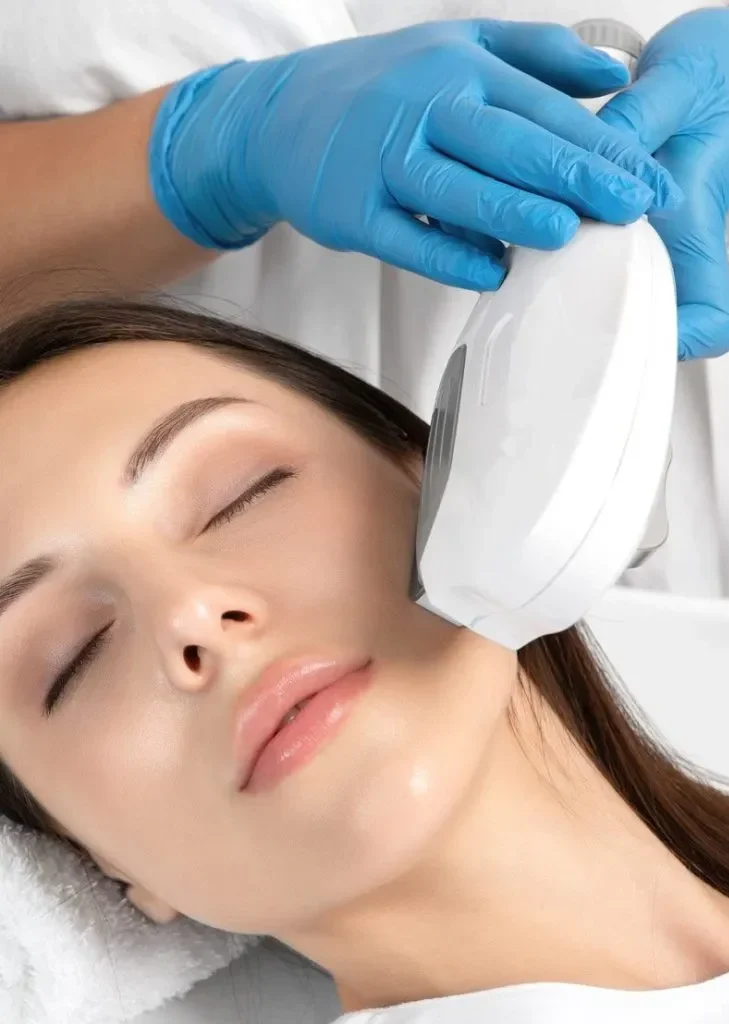IPL Vascular Treatment
IPL Vascular Treatment
IPL Vascular Treatment
Intense pulsed light (IPL) devices are non-laser high-intensity light sources that use a high output flashlamp to produce a broad wavelength output of noncoherent light, usually in the 500 to 1200nm range. Light pulses generated by most modern devices are produced by bursts of electrical current passing through a xenon gas-filled chamber. The lamp output is then directed toward the distal end of the handpiece, which, in turn, releases the energy pulse onto the skin’s surface via a sapphire or quartz block. Individual light pulses have a specific duration, intensity, and spectral distribution, allowing for controlled and confined energy delivery into tissue. IPL use in dermatology relies on the basis that specific targets for energy absorption (chromophores) can absorb energy from this broad spectrum of light wavelength (absorptive band) without exclusively being targeted by their highest absorption peak. The working basis of the IPL rests on the principle of selective photo thermolysis, in which thermally mediated radiation damage is confined to chosen epidermal and/or dermal pigmented targets at the cellular or tissue structural levels. Tissues surrounding these targeted structures, including overlying or immediately neighboring cells, are spared, potentially reducing nonspecific, widespread thermal injury. The three main chromophores (hemoglobin, water, and melanin) in human skin all have broad absorption peaks of light energy, allowing them to be targeted by a range as well as a specific wavelength of light.

In contrast to multiple well-established and effective laser treatments, one of the main advantages of IPL technology is the absence of postoperative purpura, which minimizes post-procedure downtime substantially. Rather than inducing immediate purpura, treating vascular lesions with IPL aim to raise the blood vessel temperature high enough to cause its coagulation, leading to its destruction and replacement by fibrous granulation tissue. Because of its polychromatic, IPL can target oxyhemoglobin (predominantly found in clinically red lesions), deoxygenated hemoglobin (predominantly in blue lesions), and methemoglobin with absorption peak wavelengths.
Depending on the patient and treatment area, the treatment session will take around 10 – 45 minutes. After treatment, you may feel some redness, swelling, and sunburn lasting in the first 24 hours. The symptoms will reduce in a week, and you’ll see complete recovery in 2 weeks.
You need 2-4 treatments in a month interval for optimal results. Before the treatment, avoid unprotected sun exposure for four weeks, and if the area is covered with hair, you should shave 24 hours before the treatment. Moreover, avoid any makeup, tanning spray or cream, and harsh skin products. After treatment, your skin will be sensitive to heat, so avoid hot baths and showers. Also, your skin will be so sun sensitive. This photosensitivity usually lasts for four to six weeks. The skin will burn very easily, and burns can quickly become severe. You should stay out of the sun as much as possible and use broad-spectrum sunscreen with an SPF of at least 30.